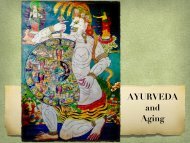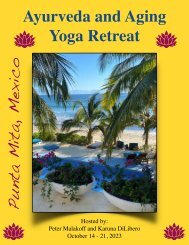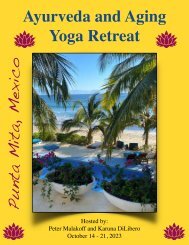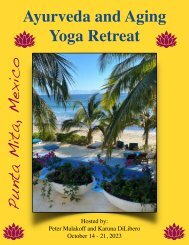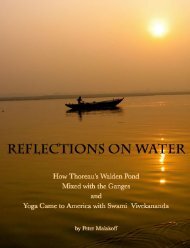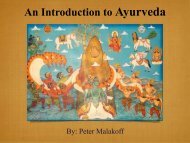How Thoreau's Walden Pond Mixed with the Ganges and Yoga Came to America with Swami Vivekananda
One early morning in 1846, during the coldest days of a New England winter, Henry David Thoreau looked out the window of his small cabin on Walden Pond and saw men cutting its ice into blocks. That ice was hauled by horse to a railroad that ran across the western edge of Walden Pond, packed into a boxcar, taken to Boston and loaded onto a clipper ship that sailed to Calcutta, India, arriving about four months later. Once there, that ice was purchased by grateful members of the East India Company. Thoreau had witnessed a small part of the global ice trade between New England and India that took place during the latter part of the nineteenth century. When Thoreau considered the ice trade, his vision sailed on metaphors far beyond the scope of business. The waters he imagined flowed both east and west and carried not just natural elements, but culture, religion and philosophy as well. He envisioned that after arriving in Calcutta, the New England ice of Walden Pond would eventually melt and run downhill where it would join with the sacred water of the Ganges. He wrote in Walden: "It appears that the sweltering inhabitants of Charleston and New Orleans, of Madras and Bombay and , drink at my well. In the morning I bathe my intellect in the stupendous and cosmogonal philosophy of the , since whose composition years of the gods have elapsed, and in comparison with which our modern world and its literature seem puny and trivial; and I doubt if that philosophy is not to be referred to a previous state of existence, so remote is its sublimity from our conceptions. I lay down the book [Bhagavad-Gita] and go to my well for water, and lo! there I meet the servant of the Bramin, priest of and and who still sits in his temple on the Ganges reading the , or dwells at the root of a tree with his crust and water jug. I meet his servant come to draw water for his master, and our buckets as it were grate together in the same well. The pure Walden water is mingled with the sacred water of the Ganges." This book tells the story of these waters . . .
One early morning in 1846, during the coldest days of a New England winter, Henry David Thoreau looked out the window of his small cabin on Walden Pond and saw men cutting its ice into blocks. That ice was hauled by horse to a railroad that ran across the western edge of Walden Pond, packed into a boxcar, taken to Boston and loaded onto a clipper ship that sailed to Calcutta, India, arriving about four months later. Once there, that ice was purchased by grateful members of the East India Company. Thoreau had witnessed a small part of the global ice trade between New England and India that took place during the latter part of the nineteenth century.
When Thoreau considered the ice trade, his vision sailed on metaphors far beyond the scope of business. The waters he imagined flowed both east and west and carried not just natural elements, but culture, religion and philosophy as well. He envisioned that after arriving in Calcutta, the New England ice of Walden Pond would eventually melt and run downhill where it would join with the sacred water of the Ganges. He wrote in Walden: "It appears that the sweltering inhabitants of Charleston and New Orleans, of Madras and Bombay and , drink at my well. In the morning I bathe my intellect in the stupendous and cosmogonal philosophy of the , since whose composition years of the gods have elapsed, and in comparison with which our modern world and its literature seem puny and trivial; and I doubt if that philosophy is not to be referred to a previous state of existence, so remote is its sublimity from our conceptions.
I lay down the book [Bhagavad-Gita] and go to my well for water, and lo! there I meet the servant of the Bramin, priest of and and who still sits in his temple on the Ganges reading the , or dwells at the root of a tree with his crust and water jug. I meet his servant come to draw water for his master, and our buckets as it were grate together in the same well. The pure Walden water is mingled with the sacred water of the Ganges."
This book tells the story of these waters . . .
Create successful ePaper yourself
Turn your PDF publications into a flip-book with our unique Google optimized e-Paper software.
Practical Vedanta<br />
The “Practical Vedanta” revealed in <strong>the</strong> person <strong>and</strong> teachings of Vivekan<strong>and</strong>a,<br />
brought a different way of looking at Vedanta, <strong>the</strong> world <strong>and</strong> religion <strong>to</strong> both <strong>the</strong><br />
West <strong>and</strong> <strong>to</strong> India. Vivekan<strong>and</strong>a attempted <strong>to</strong> free <strong>the</strong> principles of Vedanta<br />
from <strong>the</strong>ir cultural roots in Hinduism, much like applying <strong>the</strong> principle of gravity<br />
<strong>with</strong>out insisting on any necessary linkage of gravity <strong>to</strong> Isaac New<strong>to</strong>n or <strong>the</strong><br />
English. He taught <strong>the</strong> universal principles of <strong>the</strong> Truth of Vedanta, <strong>the</strong> same<br />
principles which he saw in every religion in <strong>the</strong> world. He taught that Vedanta<br />
carries <strong>the</strong> essence of <strong>the</strong> Hindu religion which was no different from <strong>the</strong> essence<br />
of any o<strong>the</strong>r religion.<br />
The following is one definition of Vedanta put forth by <strong>Swami</strong> Vivekan<strong>and</strong>a:<br />
“The truth is one <strong>and</strong> universal, it cannot be limited <strong>to</strong> any country or race or individual.<br />
All religions of <strong>the</strong> world express <strong>the</strong> same truth in different languages<br />
<strong>and</strong> in different ways. Just as <strong>the</strong> sun is no one's property, so also truth is not confined<br />
<strong>to</strong> one particular religion or philosophy. No one can say that <strong>the</strong> sun is a<br />
Christian sun or a Hindu sun or Buddhist sun or a Jewish sun or an Islamic sun.<br />
Vedanta, ra<strong>the</strong>r, promulgates <strong>the</strong> harmony of religions. As different rivers originate<br />
from different sources but mingle in <strong>the</strong> ocean, losing <strong>the</strong>ir names <strong>and</strong><br />
forms, so all <strong>the</strong> various religious paths that human beings take, through different<br />
tendencies, lead <strong>to</strong> God, or <strong>the</strong> truth . . . <strong>the</strong> three basic scriptures, evolving<br />
for over five thous<strong>and</strong> years, of Vedanta are, <strong>the</strong> Upanishads (<strong>the</strong> revealed<br />
truths), <strong>the</strong> Brahma sutras (<strong>the</strong> reasoned truths), <strong>and</strong> <strong>the</strong> Bhagavad Gita (<strong>the</strong> practical<br />
truths)... how does one manifest divinity <strong>with</strong>in? Vedanta suggests four yogas<br />
(a) karma yoga -- <strong>the</strong> path of unselfish action; (b) jnana yoga -- <strong>the</strong> path of knowledge;<br />
(c) raja yoga -- <strong>the</strong> path of meditation; <strong>and</strong> (d) bhakti yoga -- <strong>the</strong> path of<br />
devotion. The word yoga signifies <strong>the</strong> union of <strong>the</strong> individual soul <strong>with</strong> <strong>the</strong> universal<br />
truth(s).”<br />
– <strong>Swami</strong> Vivekan<strong>and</strong>a<br />
Related Glossary Terms<br />
Drag related terms here<br />
Index<br />
Find Term<br />
Section 6 - Introduction







